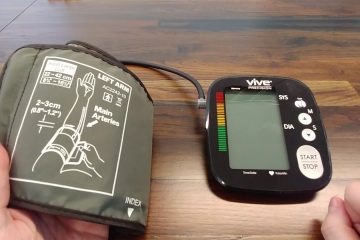5 Commonly Used Medical Diagnostic Tools

The diagnosis of medical conditions is one of the key responsibilities of any doctor. Accurate diagnosis is incredibly important, and a great many diagnostic tools have been developed in order to help doctors figure out just what is wrong with a presenting patient. Here are 5 of the most commonly used diagnostic tools in modern medicine. The diagnostic industry has recently exploded with new technology based on data analysis aided by machine learning algorithms.
Urine Testing Strips
Urine testing strips are extremely useful. They are used in the practice of urinalysis: the analysis of urine with the aim of developing a diagnosis. Urinalysis can be used to assess the possibility of kidney failure, liver damage, hormone imbalances, and many other conditions. Urine – produced in the kidneys – contains many of the chemicals which the human body discards. As such, it can be assessed by compounds that indicate toxic buildups or infections.
Pregnancy Tests
Pregnancy tests are a specialized urine testing strip that assesses whether urine contains the hormone HCG. HCG is a hormone only produced in pregnant patients. Although most pregnancy tests are carried out by patients in their own homes, there are cases in which a doctor may need to administer one.
Blood Sugar Testing Kits
When a patient presents to a doctor with symptoms indicating diabetes, they will have their blood sugars tested. Symptoms of diabetes-related high blood sugar include frequent urination, fatigue, problems with vision, and unusual weight loss. Blood sugar testing kits are kept on site in most primary care units and are a surefire method of checking whether a patient has diabetes.
Blood Pressure Monitors
Blood pressure monitors are one of the most important medical diagnostic machines in use today. They typically use a cuff that is fastened around the limb of a patient, which collects data about heartbeat frequency and blood pressure. High or low blood pressure readings can be interpreted by medical professionals in their quest to form an accurate diagnosis. High blood pressure is an immensely common symptom present in patients with a number of diagnosable health conditions.
Stethoscopes And Smart Stethoscopes
Stethoscopes were invented all the way back in 1816. Since their invention, they have been one of the most commonly used diagnostic tools in healthcare. Traditional stethoscopes use a metal conductive plate that is connected to an earpiece or set of earpieces. This allows a medical professional to ‘listen’ to the beating of the heart or the rhythm of the lungs. The action of these organs can give a professional a good idea of what might be wrong with a patient.
In recent years, the traditional stethoscope has been joined in medical practice by the ‘smart stethoscope’. These devices record the audio of a cardiovascular system and generate numerical data based upon it. This data can then be fed into software that compares this data to thousands of other recordings. By comparing these datasets, software can aid a doctor in producing an accurate diagnosis.









